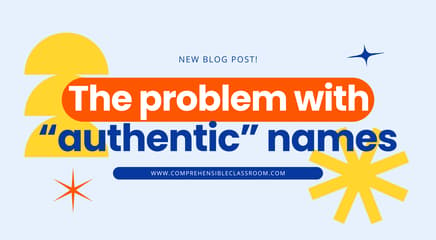I created a simple Cognates worksheet for my Spanish A students to complete tomorrow while I am at the 2011 AFLA Conference. My students will read through the information on this worksheet on their own, while supervised by the sub, and then choose some children's books from our class library to scan for cognates that they can recognize. I got the great idea to have students search for cognates in children's books (or whatever other reading material you have) from Kristy Placido (she's awesome!).
The cognate lesson is available as a free download in the Grammar folder of The Comprehensible Classroom Subscriber library.
Teaching students about cognates early in the year, and then reinforcing that knowledge often, is an effective way to boost students' reading comprehension. While not all students will have the same aptitude for recognizing and correctly interpreting cognates, they can still help ALL students. When students first read or hear a cognate, it is useful to them only if they notice the familiar pattern and make the meaning connection. However, cognates continue to be useful once meaning has been established because they provide a visual cue to learners. In the same way that a gesture can jog a student's memory and bring the meaning of a word to their mind, so can a cognate. Perhaps they did not initially see that "béisbol" means "baseball", but once they are told that "béisbol" means "baseball", they are highly likely to see that connection moving forward and have an easier time interpreting it in context than they would have with a word that shares no visual connection with their first language.
Different than language itself, which I strive to not teach, but help students acquire; interpreting cognates is a skill that should be taught and practiced. This cognates worksheet is a great first step, and I reinforce the lesson through interpretive reading activities that are rich in cognates.
Here is what my reading lesson looks like in French:




Download the full cognates reading task cards lesson in Spanish (click here) or in French (click here).






